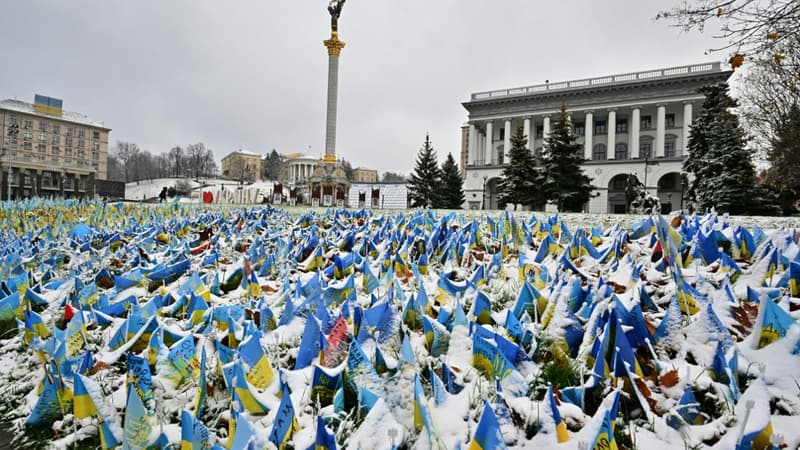As Russia carried out fresh attacks in Ukraine on Thursday, the country is also seeing its first snowfall. The capital, Kyiv, is thus covered with a white border, while the country is in energy tension due to Russian bombing.
The thermometer read 1°C in Kyiv on Thursday afternoon. “The week will be difficult,” the regional governor Oleksiï Kouleba had warned the day before on Telegram. Same story by the mayor of the city, who explained this Wednesday that “the situation of energy supply in the capital, as well as in many regions of the country, is difficult.”
emergency cuts
This situation is due to Russia’s massive attacks on Ukraine on Tuesday. Moscow launched almost 100 missiles over the country, hitting many cities including Kyiv and Kharkiv. These attacks, which killed at least one person in Kyiv, caused widespread power outages in Ukraine and even in neighboring Moldova. Some 10 million Ukrainians lost power Tuesday night, then 2 million the next morning, according to the president’s deputy chief of staff, Kyrylo Tymoshenko.
The latter denounced on Telegram a “planned attack against energy infrastructure facilities.”
To deal with this situation, the national electricity operator Ukrenergo announced on Facebook on Thursday that there would be “hourly” cuts and emergency cuts in the territory “throughout the day”. Ukrenergo explains that the “icy” weather has made the energy situation “even more complicated” as energy consumption increases.
A strategy to make up for Russian defeats
In early November, US Secretary of State Anthony Blinken estimated that Russia’s strategy of attacking civilian infrastructure served to “compensate” for its defeats on the battlefield. In fact, the massive attacks on Tuesday followed the withdrawal of Russian troops the previous week from part of the Kherson region, including the southern city of the same name, after more than eight months of occupation.
“President Putin seems to have decided that if he can’t take Ukraine by force, he will try to freeze it into submission,” said Anthony Blinken, the US equivalent of the foreign minister.
From November to March, in Ukraine, the average temperature does not exceed 3.2°C, according to the data of the World Bank.
Source: BFM TV


